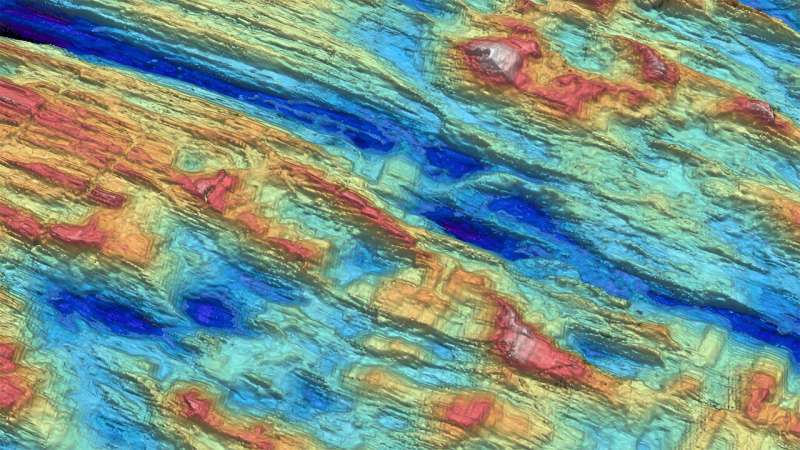This article has been reviewed according to Science X's editorial process and policies. Editors have highlighted the following attributes while ensuring the content's credibility:
fact-checked
peer-reviewed publication
proofread
Seafloor shapes on the flanks of mid-ocean ridges linked to magma supply

At nearly 65,000 kilometers long, the mid-ocean ridge system is the longest mountain range in the world. Running beneath the ocean's surface, mid-ocean ridges are formed at divergent plate boundaries, where tectonic plates stretch apart and magma rises to create new crust on the ocean's floor. The rift along the axis of the mid-ocean ridge system is among the most seismically active locations on Earth.
Through the use of multibeam bathymetry, a type of detailed sonar mapping that measures seafloor depth, researchers have cataloged a wide range of geologic formations on the flanks of these mid-ocean ridges, such as volcanic cones, seamounts, and abyssal hills—ridges up to hundreds of meters high and tens of kilometers long that range from linear to highly irregular. Previous research suggested the rate at which crust spreads apart could be the cause of this varied topography.
Brian Tucholke and colleagues studied the flanks of mid-ocean ridges using multibeam bathymetric data to better understand how magma supply may have led to this variety of geologic formations. Their findings, now published in Journal of Geophysical Research: Solid Earth, indicated that changes in magma supply influence seafloor shapes on the flanks of mid-ocean ridges more strongly than spreading rate.
The researchers examined the differences in gravity at 122 data sites on mid-ocean ridges around the globe, as well as the rate at which the ridges were spreading apart, to infer magma supply below the ocean floor. They noted that some patterns, including underwater abyssal hills that are longer, straighter, and connected, are correlated with higher magma supply. Steeper, rougher, more irregular abyssal hills are formed when magma supply is reduced.
In parts of the Southwest Indian Ridge, located along the floor of the southwest Indian Ocean, exposed mantle is likely altered and weakened by interaction with seawater, which can prevent steep underwater hills from forming despite limited supplies of magma.
The methods used in this study, a comparison of visual and quantitative findings using bathymetric data, can help other researchers investigate the structure of ocean floor landscapes even further.
More information: Brian E. Tucholke et al, The Global Spectrum of Seafloor Morphology on Mid‐Ocean Ridge Flanks Related to Magma Supply, Journal of Geophysical Research: Solid Earth (2023). DOI: 10.1029/2023JB027367
Journal information: Journal of Geophysical Research
Provided by Eos
This story is republished courtesy of Eos, hosted by the American Geophysical Union. Read the original story here.




















